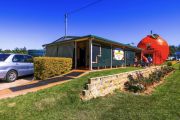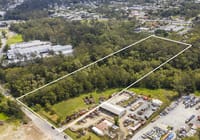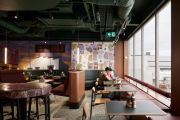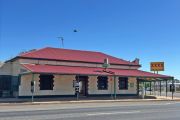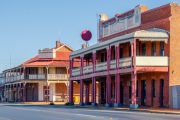
One million more square metres of retail space expected by 2020
Retailer confidence is driving demand that will create another one million square metres of large-format space in Australia by the end of 2020, new CBRE data shows.
Above-average supply levels are predicted for the next three years with local and international retailers targeting opportunities to expand, the Q2 Retail Marketview report states.
Developments including Marsden Park and Camden Valley Way in NSW, Kingston Central Plaza in Victoria and North Lakes in Queensland are expected to bring more than 55,000 square metres of stock to the market by early 2017, says Chris Parry, CBRE’s Australian head of large-format retail. The strong supply pipeline is being driven by continued retailer confidence in the sector.
“Despite the strong supply predictions, we expect vacancy rates to stay low and support rent growth as retailer competition remains heated in the sector,” Mr Parry says.
“For a long time new supply was dominated by hardware, with little or no specialty floorspace, which has fuelled an under-supply of multi-tenanted large-format floor spaces.”
 The domination of hardware stores has fuelled an under-supply of large-format space, CBRE says. File photo: Patrick Scala
The domination of hardware stores has fuelled an under-supply of large-format space, CBRE says. File photo: Patrick Scala
CBRE senior research manager Danny Lee said almost 270,000 square metres of large-format space is scheduled to be completed in 2016.
In the second quarter alone, 66,000 square metres was brought to the market and more than half was in Queensland and WA.
“Supply levels are expected to remain above long-term averages over the medium term, with over one million square metres of large-format stock forecast to be completed by the end of 2020,” Mr Lee says.
CBRE reports seven deals totalling $333.8 million were finalised in Q2, including Aventus Retail Property Fund’s $219m purchase of five east coast properties at an average yield of 7.4 per cent. The portfolio comprises of Home Central Bankstown and McGraths Hill in NSW; Home Central Shepparton in Victoria and Queensland’s Logan and Macgregor MegaCentres.
In addition, Indooroopilly Central in Queensland sold for $85 million at a 5.9 per cent yield.
 Fantastic Furniture had success with a 600-square-metre “express” store concept in the Sydney suburb of Moore Park, CBRE says. File photo: Supplied
Fantastic Furniture had success with a 600-square-metre “express” store concept in the Sydney suburb of Moore Park, CBRE says. File photo: Supplied
Researchers also identified that to cater for consumer preferences and draw foot traffic, traditional homemaker centres are diversifying the retailer mix to attract more lifestyle and non-traditional retailers.
“In addition, traditional large-format retailers are seeking smaller format stores, to cater to the growing population living in inner-city apartments,” Mr Parry says.
According to the report, Fantastic Furniture had success with a 600-square-metre “express” store concept in Moore Park, NSW. The retailer’s usual floor space is 2000 to 3000 square metres.
Swedish furniture company IKEA is also planning to expand into small-format stores to act as showrooms in non-metro areas, allowing shoppers to view products in-store before making purchases for home delivery.
‘In addition, traditional large-format retailers are seeking smaller format stores, to cater to the growing population living in inner-city apartments.’
The report also found competition among Australia’s biggest supermarkets and Aldi continues to impact supermarket performance.
While retail trade grew by 3.5 per cent in the year to May 2016, supermarket and grocery store turnover grew 2 per cent.
Clothing, footwear and personal accessories retailing, key drivers for specialty stores, also experienced slower growth. Growth was 3.4 per cent year-on-year in the 12 months to May 2016 compared with 8.5 per cent in the previous corresponding period.
Vicinity’s $841m divestment of four centres – three to Blackstone and one to Mirvac – represented two-thirds of shopping centre transaction activity over the quarter.
Retail property investment increased in Q2 to $3.1 billion from $700 million in the first quarter of 2016. Foreign investors purchased 36 per cent.
One of the biggest transactions was a 75 per cent share in Sydney’s Mid-city centre, which sold for $320 million at an estimated yield of 4.7 per cent.
